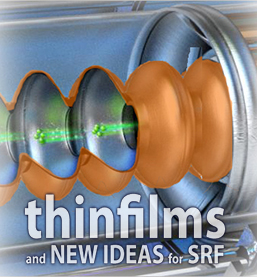Speaker
Description
Axions, candidates for Dark Matter to be found in the galactic halos, could be detected, in presence of a static magnetic field B, by their conversion to microwave photons collected in resonant cavities. The expected signal power is ∝ B²Qν, where Q is the cavity quality factor and ν the photon frequency. The latter is proportional to the foreseen axion masses which translate to microwave frequencies. Hence the need for high Q microwave cavities to be operated in intense (~tesla) fields.
In zero magnetic field, superconductors outperform copper, the best normal conductor, because of their very low surface impedance.
When a magnetic field drives the superconductor in the mixed state, the additional dissipation due to vortex motion makes the comparison more complex. Indeed, a NbTi coated cavity has provided higher B²Q than bulk Cu at ~15 GHz and 4.2 K up to the maximum ~6 T field reached in the measurements [1]. On the other hand, the actual gain in performance mainly depends on the vortex dynamics response, with its interplay between flux flow dissipation, vortex pinning effects and vortex thermal creep, and the dependence of these mechanisms on the field B, temperature T and frequency ν. By exploiting the knowledge on the high frequency vortex dynamics attained through measurements made on various superconductors (NbTi, Nb$_3$Sn, YBa$_2$Cu$_3$O$_{7−δ}$ and FeSeTe), we present here a thorough comparative study [2] on the performance that can be attained in haloscopes. YBCO and FeSeTe can improve the measurement sensitivity by one order of magnitude. Nb$_3$Sn proves to be able to deliver intermediate improvements which, along with the promising advances in cavity coatings, makes it a very interesting candidate. Finally, NbTi results suitable mainly for the lower frequency region.
This work was partially supported by the national project SAMARA.
[1] D. Di Gioacchino et al, IEEE Trans. Appl. Supercond. 29 3500605 2019
[2] A. Alimenti et al, Instruments 6 1 2022

